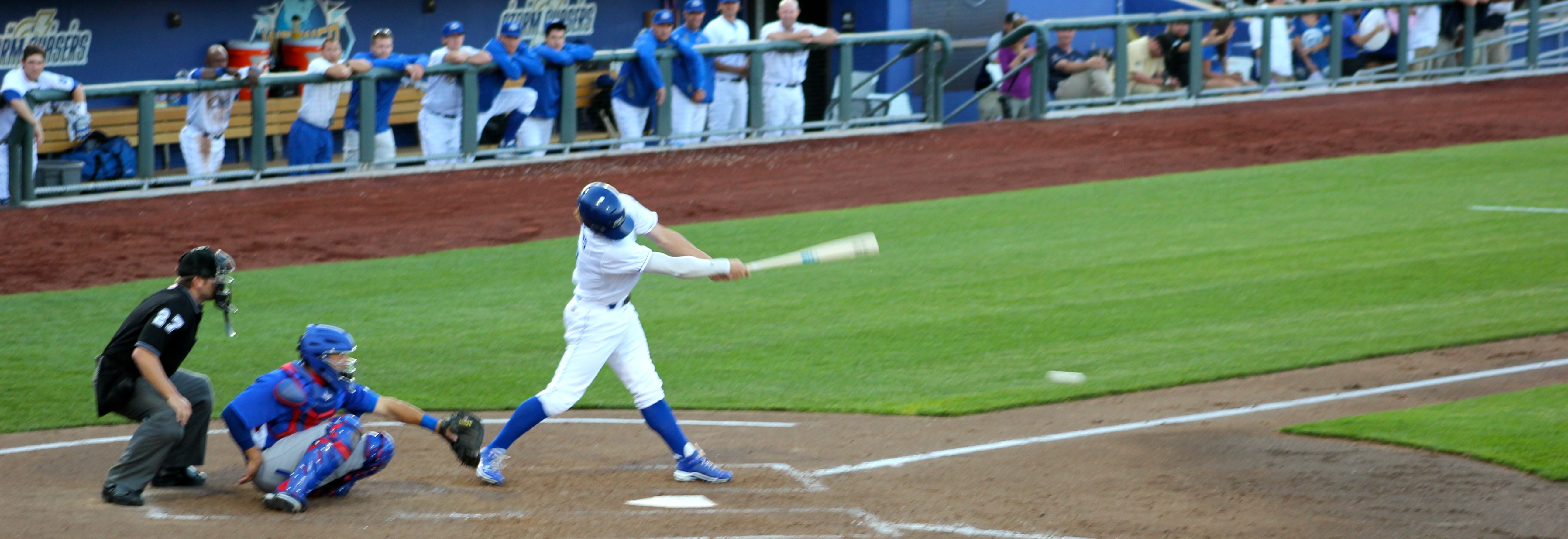BY MATT LaWELL
PAPILLION, Nebraska | Jake Odorizzi sits in front of his locker deep inside Werner Park the afternoon after another start for the Omaha Storm Chasers and opens his fan mail, one envelope after another. “Hello,” he reads out loud from a letter mailed from somewhere in New Jersey, “and how are you doing?” He reads to the bottom, folds the letter and sets its aside. Then he reads another letter, this one from a girl who plays softball in California.
The number of letters and autograph requests Odorizzi receives jumps and drops almost every week. A couple dozen letters might arrive one day, a couple dozen more the whole next week. For now, here in Nebraska, he tries to read them all.
Odorizzi is one of the last of an incredible — and incredibly large — group of Royals prospects headed for Kansas City. First baseman Eric Hosmer and third baseman Mike Moustakas received their calls last season to play at Kauffman Stadium, the two top talents in a system flush with potential and production. So did lefty starter Danny Duffy, righty reliever Aaron Crow, catcher Salvador Perez and second baseman Johnny Giavotella. And then there are lefty starter Mike Montgomery, a potential ace, and outfielder Wil Myers, the minor league home run leader, who might receive their calls any time between now and Labor Day. Another lefty starter, John Lamb, is expected to this season after Tommy John surgery.
The Royals are still out of first place and some of their top prospects, Montgomery and Myers and Odorizzi included, are still in the minors. But there is hope, and in the minors, hope is a worthwhile currency.
The list goes on and on.
The Royals started to focus on internal player development six years ago, almost immediately after Dayton Moore grabbed control as general manager, and have watched the plan unfold almost perfectly ever since. Players have moved up, level by level, toward Kansas City. The process has been examined, dissected, reported and praised locally and nationally. Sports Illustrated published a feature more than a year ago already, written from a future perspective, about how the Royals finally turned the tide and finished a majestic return to dominance with multiple World Series championships.
All of that is a pipe dream for now. The Royals are still out of first place and some of their top prospects, Montgomery and Myers and Odorizzi included, are still in the minors. But there is hope. Two years ago, the Northwest Arkansas Naturals, one level removed from Omaha, won the Texas League championship. Last season, the Storm Chasers won the Pacific Coast League championship. This season, the Storm Chasers are the best team in the league again, winners of three of every four home games, owners of the biggest division lead in the minors.
There is hope, and in the minors, hope is a worthwhile currency.
♦ ♦ ♦
Time for minor league trivia. Until a name change last season in conjunction with the move to Werner Park, the Storm Chasers played 38 of their first 42 seasons as the Omaha Royals. Under what other nickname — intended to honor the railroad history in Omaha and around Nebraska — did the team play from 1998 until 2001? (Keep reading for the answer.)
Two big innings doomed the Storm Chasers on the way to their third loss in four games. The Storm Chasers jumped out to a 4-1 lead over the Iowa Cubs after six innings thanks to a strong rehab start by Major League left-hander Jonathan Sanchez, who allowed a run on three hits over 5 2-3 innings, and homers by second baseman Yuniesky Betancourt and first baseman Clint Robinson. But the lead shrank in the seventh after longtime Major League starter Doug Davis allowed the Cubs to score a pair, then disappeared all together after he gave up two more runs in the eighth.
Three weeks after our visit to Papillion and Werner Park, the team landed new ownership, which might not be news in many minor league cities, but it is in Omaha, where Warren Buffett owned a quarter of the team for almost a quarter of a century. Buffett, famous for his work with Berkshire Hathaway, and his childhood friend Walter Scott, each purchased 25 percent of the team in 1991 in an effort to keep it and the College World Series in the city. During a news conference on June 19, Buffett explained that with the new ballpark in place and the future in Omaha clear for the Storm Chasers and the CWS, “Walter and I didn’t feel the same obligations any more, because Sarpy County had taken care of our obligations.” The new ownership group is headed by Gary Green, a businessman who also heads the group that owns the Richmond Flying Squirrels.
In lighter news outside of the business of baseball, Werner Park features a Wiffle Ball field behind the batter’s eye in center and a carousel not far from the leftfield foul pole, the first time we saw either of those items at a ballpark. (Several other parks along the way have featured pint-sized fields, though none used exclusively for Wiffle Ball.)
Want the answer? The team played four seasons as the Golden Spikes, as in the golden spike itself driven in at Promontory Summit, Utah, to recognize the completion of the Transcontinental Railroad in 1869. The team played as the Royals from 1969 until 1997, then again from 2002 until 2010.
And in random statistical news, the game started four minutes late, the first pitch was a ball, the first batter grounded out to second and the national anthem lasted 1 minute and 33 seconds. We ate some press box pork patties that looked and tasted just like chicken. Sort of delicious. Probably relatively nutritious, too. Probably. Maybe not
Matt@AMinorLeagueSeason.com ♦ @MattLaWell ♦ @AMinorLgSeason
Want to read stories about the other teams on our schedule? Click here and scroll to the calendar.
